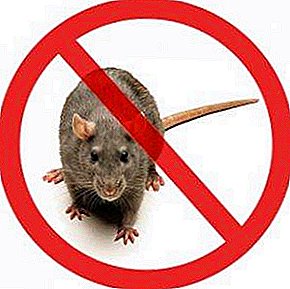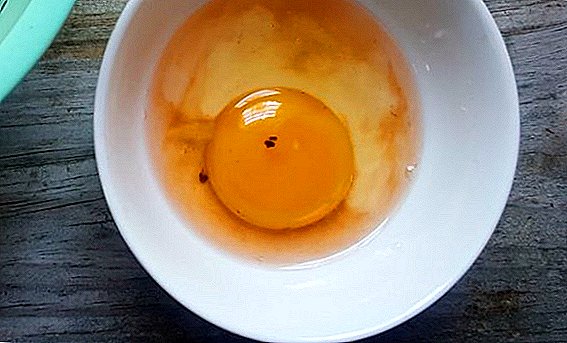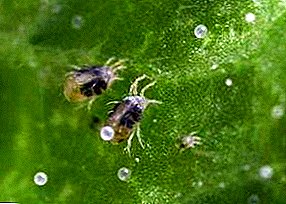
The sudden death of the bird always bring the greatest damage to the entire economy.
There are many diseases that can cause such a death of a bird. Among them, one of the most dangerous diseases is neurolimpatomatosis, which affects all internal organs of the chicken.
Neuro-lymphomatosis is a highly contagious tumor disease of chickens, which is characterized by serious neoplastic disorders that occur in parenchymal organs.
As a rule, this disease is accompanied by the occurrence of multiple inflammatory processes in the peripheral nervous system.
Often, birds change the color of the iris, and proliferative processes in lymphocytes and plasma cells of internal organs consisting of a parenchyma are recorded.
The disease can manifest itself in chickens of any breed, therefore all breeders need to monitor their livestock. Outbreaks of neurolymphomatosis are often unpredictable.
What is neurolymphomatosis in chickens?
 Neurolymphomatosis was discovered relatively recently.
Neurolymphomatosis was discovered relatively recently.
The first mention of the poultry that suffered from this disease was dated 1907. It was this year that specialists were able to accurately describe neurolymphomatosis: its course, symptoms, control measures and prevention.
The disease brings great losses to any farm where it occurs. Neurolymphomatosis, appearing once, easily moves from diseased chickens to healthy ones.
On average, the susceptibility of a bird on one farm is up to 70%, while out of the total number of sick chickens, up to 46% die.
Mortality from this disease is much higher than from leukemia, so it is considered dangerous for any breeder.
Pathogens
 The causative agent of neurolymphomatosis is a DNA-containing herpes virus from group B - Herpesvirusgalli-3.
The causative agent of neurolymphomatosis is a DNA-containing herpes virus from group B - Herpesvirusgalli-3.
This virus easily induces interferonogenic and immunosuppressive activity in the body of the chicken, which reduces its overall resistance to external factors, increasing the risk of infection with other infections.
Very often, the herpes virus causes other diseases.among which infectious bursal disease, leukemia, sarcoma, adenoviral infections, etc. are often registered.
The herpes virus survives well in the environment. Experts have found that it can maintain viability of up to 8 months in the severed feather follicles.
At a temperature of 65 ° C, the virus retains its pathogenicity for many months, but if the temperature drops to 20 ° C, then it can die after six months in this environment.
Course and symptoms
 The incubation period of the virus can last from 13 to 150 days.
The incubation period of the virus can last from 13 to 150 days.
It all depends on the external conditions, as well as on the resistance of a particular individual.
In addition, veterinarians have found that breeds of chickens with a higher genetic potential suffer from neurolymphomatosis much more often.
At the same time, the age of the hen affects the rate of development of the disease.
Younger pedigree birds have a shorter incubation period and rapid acute course of the disease.
Neuro-lymphomatosis is divided into two possible forms: acute and classical. The acute course of the disease manifests itself spontaneously on farms.
Chickens appear the first nervous symptoms after 40 days, but there have been cases when they could appear after 58 or even 150 days. In this form of neurolymphomatosis, bird mortality can range from 9 to 46%.
As for adult birds, they begin to refuse food, lose weight quickly, cannot maintain correct posture. In laying hens the number of eggs laid is sharply reduced.
Neuro-lymphomatosis in classical form can occur subacutely or become chronic. When the incubation period is from 14 to 150 days, it is characterized by claudication, paralysis of the limbs, gray eyes, loss of response to light.
As a rule, the bird dies in 1-16 months after the first symptoms. The mortality rate ranges from 1 to 30%.
 Bress Gali breed of chickens is characterized by bright white color and red comb.
Bress Gali breed of chickens is characterized by bright white color and red comb.Tuberculosis of birds is one of the most terrible diseases. Protect yourself and your birds by studying an article about tuberculosis.
Diagnostics
The diagnosis of neurolymphomatosis is established only after the study of biological material, as well as pathological anatomical data.
Biological material taken from live chickens consists of bioassays on chickens and embryos. Also, histological and serological studies are conducted, during which specialists differentiate neurolymphomatosis from leukemia, sarcoma, hypovitaminosis, influenza, and listeriosis.
Treatment
 Unfortunately, this disease difficult to treattherefore, a sick bird is most often sent for slaughter so that the rest of the livestock does not get sick.
Unfortunately, this disease difficult to treattherefore, a sick bird is most often sent for slaughter so that the rest of the livestock does not get sick.
However, for the treatment of chickens, attenuated versions of the herpes virus can be used.
They are injected intramuscularly into the body of a chicken, where they begin to fight the disease.
Also, natural apathogenic strains of the virus and a vaccine from benign herpesvirus can be used for these purposes.
All these drugs can really help in the fight against neurolimomatosis, but they are powerless if the disease has gone too far.
Prevention
 Strict compliance with sanitary standards can significantly limit the spread of the virus in the farm.
Strict compliance with sanitary standards can significantly limit the spread of the virus in the farm.
When the first outbreak of neurolymphomatosis occurs, 5-10% of infected livestock is immediately killed in a sanitary slaughterhouse.
Immediately after this, the farm is forbidden to sell hatching eggs and live poultry, as they may be latent carriers of the disease.
After the occurrence of the disease on the farm, thorough disinfection and cleaning of all premises is carried out. Do not forget about the additional disinfection carried out for inventory, as it can also cause the spread of herpes virus.
Litter and bedding from cells and walking yards are disinfected and burned. Fluff and feathers of sick birds are disinfected with caustic soda, which allows you to kill the virus.
All surviving birds must undergo additional vaccination against neurolymphomatosis.
Vaccines are made from several serotypes of the herpes virus, which can affect not only chickens, but also other types of poultry. Timely vaccination can significantly reduce the risk of this disease on the farm.
Conclusion
Neuro-lymphomatosis almost always brings huge losses to the farm. Due to the high contagiousness, it instantly affects the main part of the population, which subsequently leads to the death of poultry.
However, timely preventive measures can help poultry owners protect their birds from this disease.












